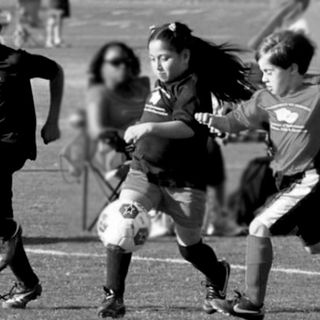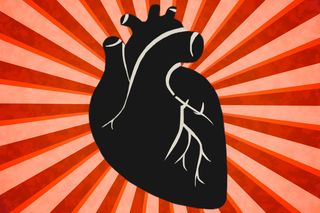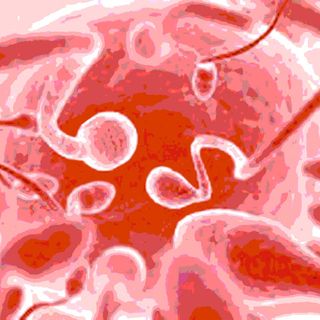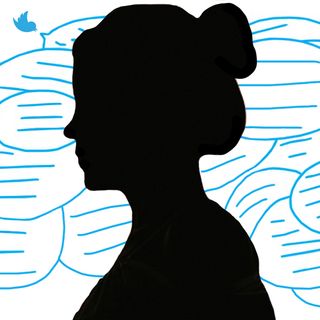
What You Need to Know About Heart Disease and Heart Attacks in Women
If you think heart disease is a man’s disease, you’re wrong.

Heart disease is the leading cause of death of women worldwide, and India is no exception. It cuts across all classes and geographies killing almost three times as many women as all cancers combined. And yet, the disease, and its treatment, are often overlooked when it comes to women’s health.
Heart disease is seen as a man’s disease. It’s an endemic medical bias that is costing women their lives; women are less likely to be tested for blockages, and when they are, they are less likely to present with classic symptoms of heart disease, which means they may go undiagnosed; in fact, “50% of women with heart disease show normal coronary arteries on angiogram versus 17% of men,” one report has found.
Even after having and surviving a heart attack, the gender gap remains; women are less likely to get preventative or rehabilitative care following a heart attack.
“Certainly I do think that men recognize, and health services recognize, that men have heart attacks, but there is definitely the perception that women don’t have heart attacks,” said cardiologist Clara Chow, senior author of a study that found women are twice as likely as men to die within six months of having a heart attack.
Related on The Swaddle:
How heart disease in women differs from heart disease in men
Until very recently, heart disease, despite being a leading cause of death of women, has mostly been considered a man’s disease. That’s because, in part, heart disease in men manifests much earlier than it does in women; the average age of a woman’s first heart attack is 72, while a man’s is 65. However, South Asians, including Indians, are more prone to heart disease. And while men are more likely to develop heart disease earlier than women, both are likely to develop heart disease roughly 10 years earlier than the world averages.
But it’s also because some of the risk factors for heart disease are different for women than for men. While some are the same — smoking, for instance, is a major risk factor for both sexes — there are major differences; for instance, the use of oral contraceptives by women who smoke, compounds their risk of heart disease. Diabetes, a metabolic disease on the rise across India, also increases women’s risk of heart disease much more than it does for men.
Menopause is also a risk factor for women that men don’t face; estrogen is thought to have a protective effect on the heart, and when estrogen levels drop, as they do naturally during menopause, heart health takes a hit. (However, hormone therapy isn’t necessarily a preventative measure; especially for older women it carries more drawbacks — an increased risk of stroke and breast cancer — than it offers benefits for heart health.) Polycystic ovarian syndrome (which is thought to affect as many as 20-25% of women in India) is also a hormonal risk factor for heart disease that men don’t experience.
And finally, and perhaps most significantly when it comes to day-to-day monitoring of heart health, lifestyle risk factors also differ; emotional stress is more likely than physical exercise to trigger a heart attack in women, which is not the case for men. Other emotional risk factors of heart disease in women include: “depression, perceived stress at home, low locus of control and major stressful life events. Suppressed anger and marital stress predict poorer outcomes in both healthy women and those with [ischemic heart disease],” suggests one report.
But because heart disease is known as a man’s disease, and these risk factors for women are often overlooked and underdiscussed, women don’t get the care they need in time; research suggests women seek hospital treatment on average 60 minutes after symptoms of a heart attack manifest, while men only wait 45.
“Women are so used to playing the role of caregiver that they almost feel guilty when it comes to taking care of themselves,” writes Aashish Contractor in The Heart Truth. “This is also one of the reasons why they often receive less than adequate treatment even after being diagnosed with heart disease.”
What are the signs of a heart attack in women?
The warning signs of a heart attack in women sometimes differ from the traditional symptoms most of us envision when we think of heart attacks. Yet, it’s even more confusing, because for many women, the traditional signs of a heart attack do hold true. Research differs on what are standard signs of heart attack in women, which means women have to be on the look out for a wider range of symptoms than men — both the classic symptoms men experience, and the ‘atypical,’ or female warning signs women may experience. Not all women who have heart attacks will experience the uniquely female symptoms below, and it’s entirely possible to experience some symptoms from both sides of the list below. If you experience any of the symptoms, trust your instincts and go to a hospital/call a doctor immediately.
Classic signs of a heart attackFemale signs of a heart attackA feeling tightness or ache, or a crushing, squeezing or burning feeling in your chest. This feeling may last for more than a few minutes, or it may come and go.Feeling weakPain or discomfort that radiates through your upper body, especially your shoulders, neck, either or both arms, and/or your jawFeeling nauseous and/or vomitingSweatingFeeling pressure on your chest (which may sustain, or come and go)A feeling of acid reflux, gas or indigestionFeeling dizzyFeeling tired for no reasonPain in your backFeeling short of breathThroat discomfortFeeling nauseous Chills and/or cold and clammy skin
Liesl Goecker is The Swaddle's managing editor.
Related


Study Finds 15% of Infertile Men May Have Undiagnosed Prediabetes
